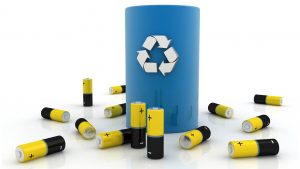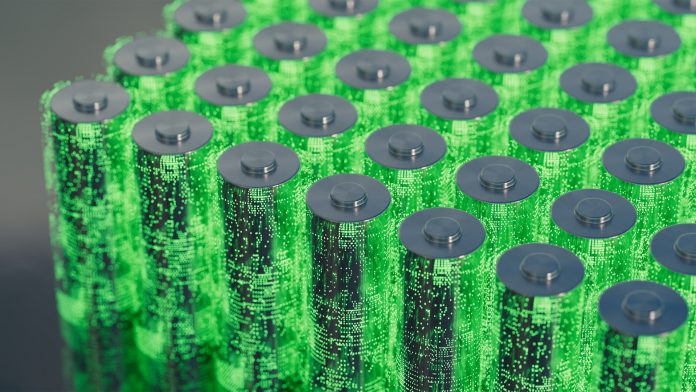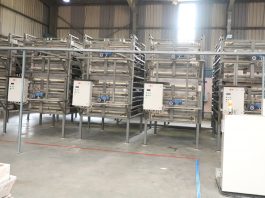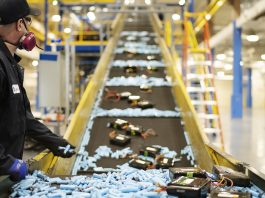Bryant Polzin, Deputy Director of the ReCell Center, emphasises the importance of furthering battery recycling technology to keep up with demand for lithium-ion batteries.
Given the rapidly increasing demand for lithium-ion batteries (LIB) in line with the transition to electric vehicles (EVs), ensuring a healthy battery supply chain is more important than ever. However, with limited availability of critical minerals used in the manufacturing of such batteries and soaring commodity prices, it is important to consider ways to optimise the availability and efficiency of current battery technology. To support the needs of the supply chain, many organisations are now advancing lithium-ion battery recycling.
Launched to support innovation in battery recycling technology, the ReCell Center, based at Argonne National Laboratory in the US, is a collaboration of industry, academia and national laboratories working together to advance recycling technologies along the entire battery lifecycle. The Center aims to grow a sustainable battery recycling industry by developing an economic and environmentally sound recycling process that can be adopted by industry for lithium-ion and future battery chemistries.
Bryant Polzin, Deputy Director of the ReCell Center, spoke to The Innovation Platform to discuss the current and future advancements in lithium-ion battery recycling, and how the Center’s work is helping to secure a healthy supply chain.
What is the ReCell Center, why was it launched, and what are your key goals and objectives?
The ReCell Center was launched by the U.S. Department of Energy (DOE)’s Vehicle Technologies Office to advance lithium-ion battery recycling. The main technology that ReCell is focused on is called direct cathode recycling. In this process, LIB cathode materials are not broken back down into the elements, like in hydro or pyro metallurgical processing, but the battery materials are kept in a useable form to be put directly back into battery production. Several companies are working in the hydro and pyro metallurgical recycling field, but only a few are working in the direct recycling field.
Despite the huge potential of this technology, there was a lack of companies working in the area. This prompted DOE to address some of the barriers to direct recycling technology.
ReCell’s main goal is to create a process flow that will allow a recycler of LIBs to be economically attractive and to be cost-neutral to the consumer when their EV reaches the end of its life. Today, recyclers’ profits are driven by the cobalt and nickel content in batteries but, as the quantity of those materials decrease or are eliminated completely in batteries, the potential profit made by recyclers using hydro or pyro processing will be dramatically reduced. Therefore, to ensure some type of profitability, if a material can be recovered in a usable form and directly reintroduced into battery production, like in the direct recycling process, the potential for profitability would still be there even using low elemental cost material, like lithium iron phosphate (LFP).
What battery recycling processes are currently being used for LIBs in the US? Which are working well and where could improvements be made? How soon can we automate the recycling process?
There are two main recycling processes used today to recycle LIBs – pyrometallurgical and hydrometallurgical (with the third potentially being direct cathode recycling). Each process has its advantages and disadvantages when it comes to recycling.
Smelting (pyrometallurgy) treats the input as if it were an ore, exposing it to high temperature (over 1100°C) to melt or burn all the components of the cell. The lithium and aluminium are lost to the process slag, which may find use as a cement additive, but are generally not economically recovered. The product of value is a mixed alloy of cobalt, nickel, copper, and some other metals, which must then be further treated to separate the metals into their various metal salts. They can then be reintroduced into the supply chain as raw materials for cathode production. This type of process is commercially mature and is used to process metals such as iron and copper on a very large scale.
Hydrometallurgy, or leaching, is carried out on a large commercial scale (in China and Korea) and can convert a mixture of cell chemistries into product that can be reintroduced into the battery supply chain. Shredded cells are sieved to separate plastic and copper and aluminium foils for recycling elsewhere, and the remaining material is dissolved in strong acid. The products can be removed from the solution as separate metal salts to produce specific cathodes.
Direct recycling is the recovery, regeneration, and reuse of battery components directly without breaking down their chemical structure. The concept is simple: keep the cathode crystal structure intact. By recovering crystalline material, several energy-intensive and costly processing steps can be avoided. Other cell components can also be recovered in near-final form. The main steps in direct recycling are size reduction, separation of the various components, and upgrading products back to battery-grade specifications. This process provides the quickest pathway to return materials to a battery. This method of recycling is still in the R&D stage, with additional work needed to make it a commercial process.
In the future, all these recycling technologies will be utilised. There will be no right answer as to how advancing lithium-ion battery recycling will be conducted. As for improvements, for pyro and hydro metallurgical processing, process efficiency and an increase in materials that can be recovered in these processes are areas for improvement. For direct recycling, it is still at its early stages so the scaleup of these processes still needs work.
As for automation of the recycling processes, we believe that it is still a long way off. There are several factors that will determine if automation is even an option in the long term. Currently, there is no standardisation of battery packs for EVs, so every vehicle is different, making it difficult for automation to handle the disassembly. A techno-economic modelling effort is currently underway to look at the cost and capacity of automated systems for EV pack disassembly. Hopefully, this will provide some guidance into what it would take to design an EV pack and associated automation to minimise the cost and maximise productivity.

Reusing materials from batteries is key to achieving circular economy ambitions and critical materials supply, but what materials are currently being recovered during the recycling process? How are they being reused and how do you expect to make this profitable for greater industry take-up?
The main products that are being captured today via recycling are nickel (Ni), cobalt (Co), and copper (Cu), as those are the most valuable metals in LIBs. Lithium (Li) is another material of high value, because of its limited supply due to the growth of the battery industry, and because of its difficulty to replace in transportation applications for batteries. There are efforts underway to recover the lithium in the slag from the pyro processing, lithium salts are being recovered from both the electrolyte and cathode material in the hydro process, and direct recycling is recovering the lithium salts from the electrolyte, keeping the lithium in the cathode, and recovering trapped lithium for other battery components.
The largest impediment to recovering lithium is the small amounts per battery that make economic recovery challenging. These are the materials currently being targeted by recyclers. To maximise the revenue stream for any recycler, lithium, aluminium (Al), manganese (Mn), and graphite (anode material) need to be recovered as well. All these materials can be fed back into the battery supply chain if recovered. The whole point of recycling is not only to recover these materials but to introduce them back into the battery supply chain. We want to offset the need for virgin/raw materials, not supply these materials to other applications. The hope is, by doing this, we will be able to: reduce emissions, reduce the cost of materials, and secure material for a US battery supply chain.
There are many moving parts in the LIB recycling world, and they are all gearing up to process more end-of-life batteries and recover the materials. Right now, this process is profitable for all individuals involved (collectors, pre-processers, recyclers) due to the high Ni and Co content of the materials they are handling. There are questions about how these companies will be profitable in the future as the Ni and Co content in EV batteries continues to decrease. This is where process R&D comes in, to look at how to reduce processing cost and develop new processes to optimise overall recycling process flow.
What role will innovation play in advancing battery recycling techniques?
Innovation will play a huge role in advancing lithium-ion battery recycling techniques. Innovation is needed in all three recycling methods to continue to make them viable for recycling all types of LIBs. Process optimisation, material upcycling, process scaleup, new/novel processes, materials separation, and material handling are just a few areas, ripe for innovation, that can greatly impact recycling. Some innovations may drive cost reductions, emissions reductions, minimise water usage, and minimise energy consumption. All these items will provide a benefit to society and keep our world clean and safe.
As improvements are made in recycling methods, will this impact on the quality of materials recovered, and what benefit will this have?
Impurity content of recycled materials is an industry mystery right now, and causes some hesitation for recycled materials to be used in the battery industry. By further researching the different recycling processes, while monitoring how and where the impurities are coming from, a purer product can be achieved through the recycling process, which will ease industry concerns about using recycled material. The more recycled content we can get back into the battery supply chain, the less reliance we will have on foreign sources of materials, therefore securing our national energy resources.
What does success look like for the ReCell Center?
Our goal is to improve battery recycling in any manner that helps domestic recycling companies become successful and to help solve their problems or answer the questions they have about their materials. If our work helps create a viable domestic recycling supply chain and create US jobs, then our programme would be considered a success. Our work can be applied to all three recycling technologies and we want to have the maximum impact on the overall battery recycling industry.
Bryant Polzin
Deputy Director
ReCell Center
https://recellcenter.org/
Please note, this article will also appear in the tenth edition of our quarterly publication









